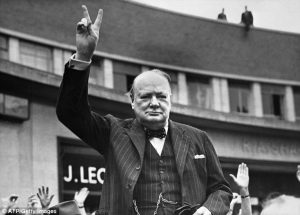The Start of the Decolonisation Process of the British Empire: The Dominions, and the Commonwealth.
Earlier the cable system had been considerably expanded. The Eastern Telegraph Company brought Australia, Hong Kong and South Africa within easy communication of London. British worries at the tum of the century in relation to the challenge of rival empires led to the construction of a government-controlled “all-red” cable link to Australia via Canada. The Marconi Company inaugurated a wireless maritime service to help shipping. Additionally, in 1927 a single company which later became known as Cable and Wireless Limited, took over the cable and wireless interests of the various empire countries. All these technological developments boosted immensely the accessibility of even the furthest and most isolated. As a result of the prospect of viable economic future, an expanding population and a rising standard of living, the white Dominions not unnaturally were pressing for acceptance as full members of the international family of nations. In order to attain such recognition they had to prove to foreign nations that they had weaned themselves away from ‘mother’ Britain and now could stand fully independent. In colonial minds their valiant fighting efforts in the 1914-18 war marked their full political development. Britain was prepared to acknowledge this but overseas countries were not so sure. After all Britain had made a general declaration of war bringing in the whole Empire, although Australia, New Zealand, Canada, South Africa and India claimed that Britain’s declaration was also theirs. Although in the fighting the Dominions maintained control over their own forces at the front, a general overall command by the British operated. The purpose of the whole effort was one of co-operation, yet under a British lead. Most significantly, Britain had made it clear before the war that she alone determined British and Empire foreign policy.
“At the 1919 peace conference the Dominions were accorded an indeterminate status, short of full nationhood, and in their admission to League of Nations, the Dominions took on a similar dual status, as individual members and as part of the Empire. Sometime during the 1920s, however, the Dominions probably acquired full nationhood although no precise date can be given.”4 This development received the official seal known as the Statute of Westminster in 1931, which categorized the Dominions as members of the British Commonwealth of Nations. But even after that event, not all the nations were exercising their full rights in foreign policy, such as diplomatic representation.
The ‘Commonwealth’ idea had been gestating very slowly as the political answer for the grown-up Empire. Colonies could be granted independence without being separated completely from their imperial heritage. Colonial nationalism could be satisfied in a way that imperial unity could never manage. Aspects of the commonwealth idea had been in formulation since at least the eighteenth century. In the next century the ‘little Englanders’ contemplated some sort of a commonwealth structure in which the colonies might freely co-operate and associate with Britain. In the twentieth century the elaboration of the ‘dominion’ concept for the self-governing colonies became one of the hallmarks of the commonwealth spirit; the creation in 1907 of the Dominions Division within the Colonial Office was token of this. The political maturity of the Dominions, however, converged on their assertion of full power in foreign affairs – making treaties, having their own diplomatic representation, making war and peace, in short devising a foreign policy independent of British needs. Canada was leading in such affairs.



